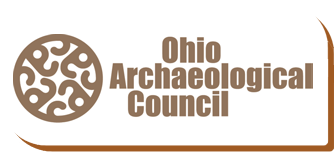The Continuing “Stone Mound Problem”: Identifying and Interpreting the Ambiguous Rock Piles of the Upper Ohio Valley
Charity M. Moore and Matthew Victor Weiss
Abstract
Rock piles are some of the most ambiguous features encountered in the Upper Ohio Valley, encompassing diverse origins and functions. A single pile can appear to be consistent with multiple interpretations and each interpretation carries implications for how the rock pile is then recorded (or not recorded) and evaluated against the National Register of Historic Places criteria. Building on recent fieldwork at the Bear Knob Rock Piles (46UP342), this article explores historical sources, regional case studies, and archaeological methods that can be used to examine rock features, and calls for the adoption of similar best practices and guidelines at the federal and state levels. Only through a comprehensive, programmatic approach, informed by indigenous knowledge, can archaeologists overcome the ambiguity of rock piles and expand their understanding of the ways people augment and interact with the landscape through the construction of rock features and the material affordances of stone.
The Great Hopewell Road: New Data, Analysis, and Future Research Prospects
Kevin R. Schwarz
Abstract
The Great Hopewell Road is a prehistoric parallel-walled roadway that archaeologists hypothesize to have passed from the Newark Earthworks in Licking County, Ohio, to the vicinity of Chillicothe, Ross County, Ohio, a distance of about 60 miles. Its existence was proposed during the nineteenth century and it received renewed interest when Bradley Lepper of the Ohio Historical Society investigated it in the 1990s. This article reviews recent attempts to identify the Great Hopewell Road south of the Newark Earthworks, based on efforts by the Ohio Historical Society, a cultural resource management project by ASC Group, Inc., and other investigations. While evidence of the prehistoric road is convincing in some cases, in other cases the search for the signature and deposits associated with it has proved elusive. An evaluation of the strength of evidence is applied to elicit identification trends. The study concludes by commenting on the unique potential of the site to inform archaeologists about prehistoric networks and movements of people. I also comment on challenges it presents for cultural resource management archaeology.
A Radiocarbon Date for a Wooden Burial Platform from the Reservoir Stone Mound (33LI20), Licking County, Ohio
Bradley T. Lepper
Abstract
The Reservoir Stone Mound (33LI20) located in southeastern Licking County, Ohio, originally was between 12 and 15 m (40 and 50 ft.) high. It was the largest aboriginal stone structure north of Mexico. A fragment of wood from a unique wooden burial platform excavated from the mound in 1860 has yielded a radiocarbon date of between cal A.D. 85 and 135 situating it in the early Middle Woodland period. Artifacts reportedly found in association with the burial platform suggest an Adena cultural affiliation for the mound.
